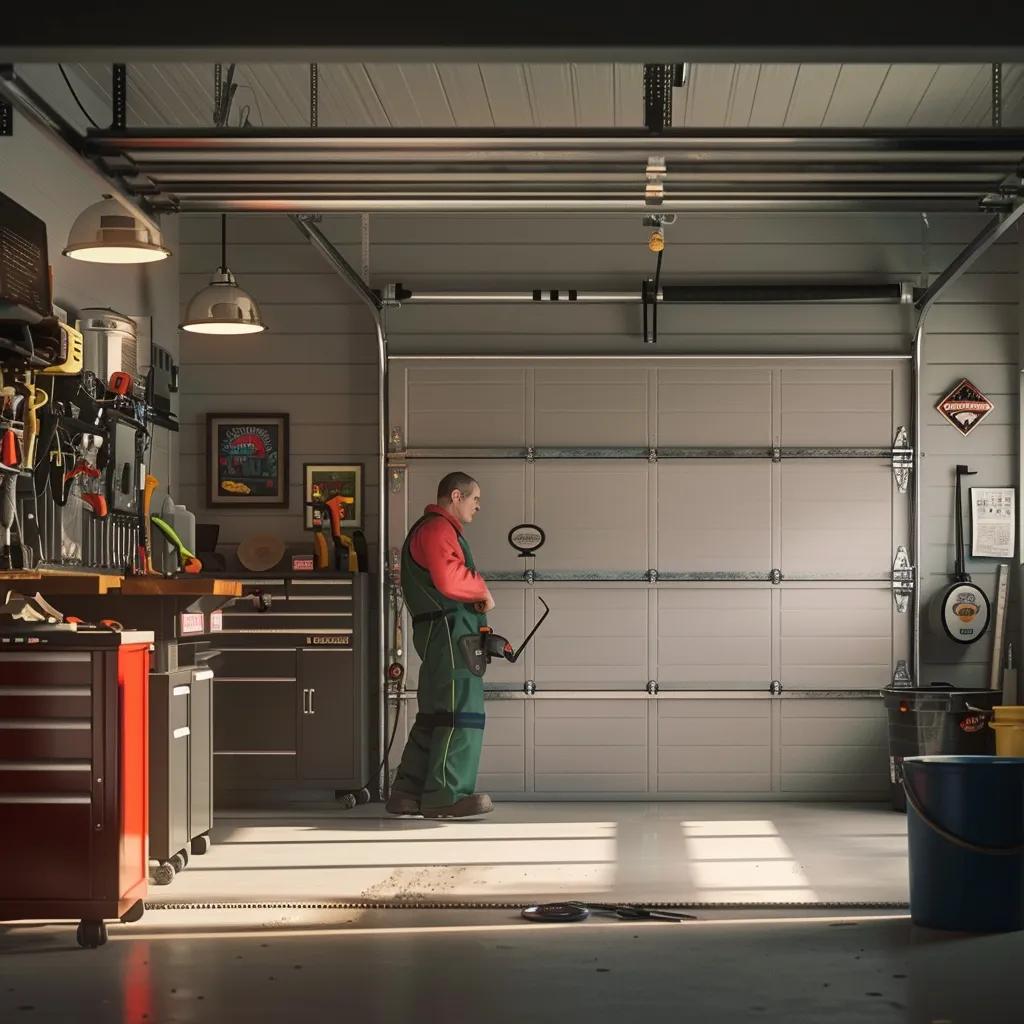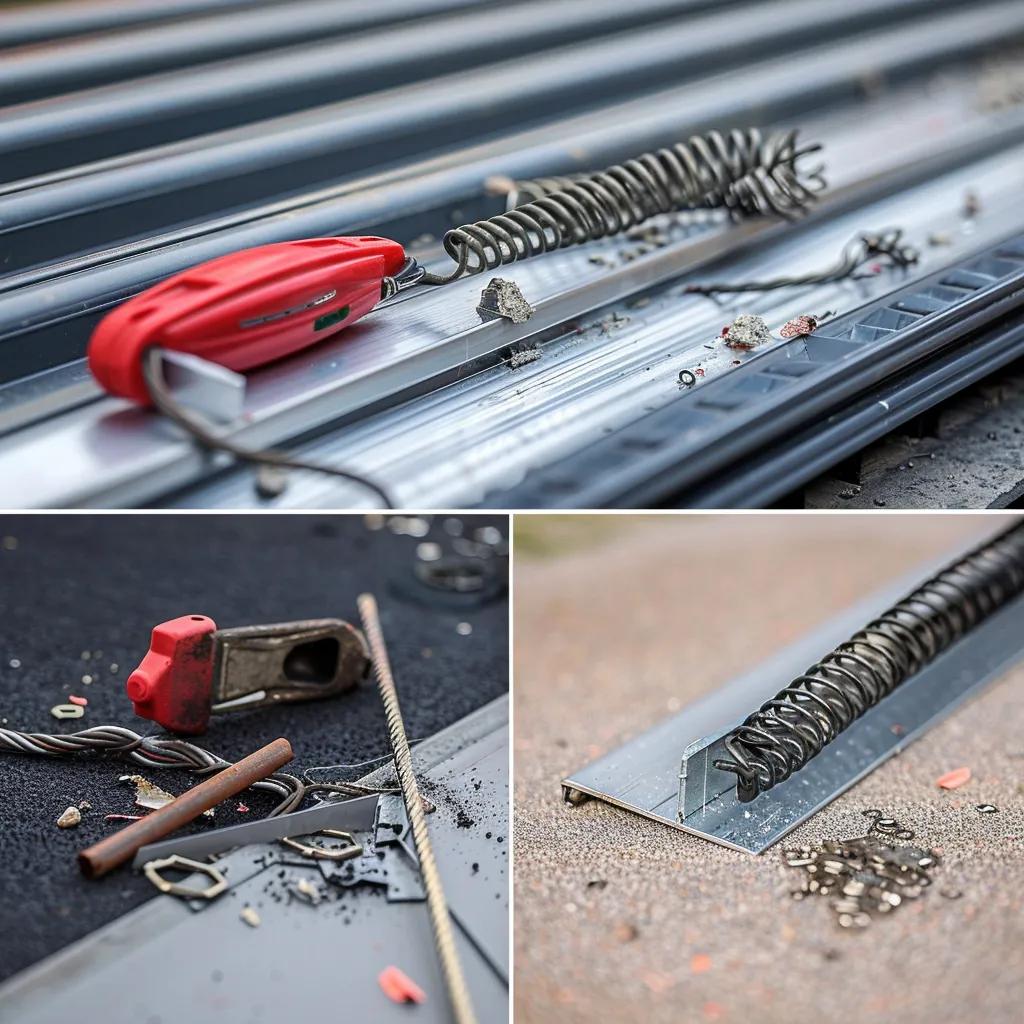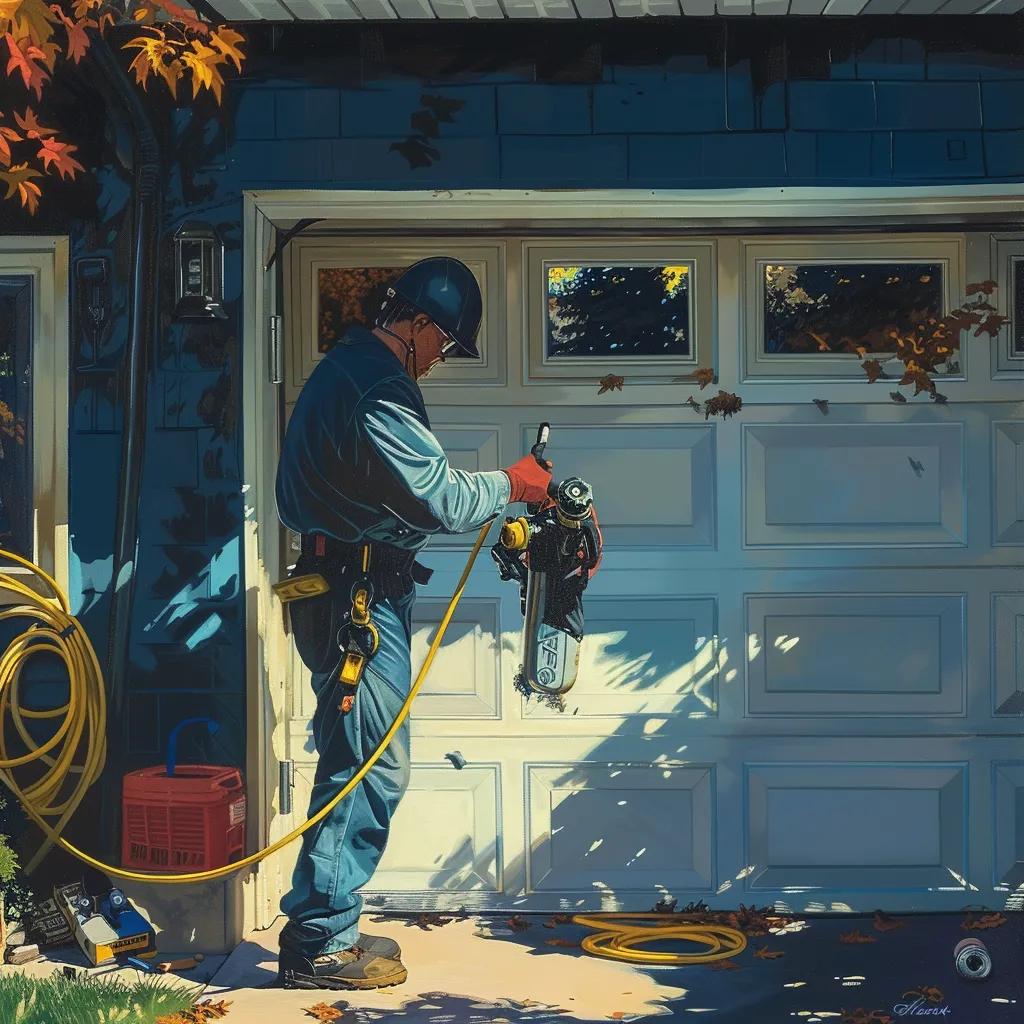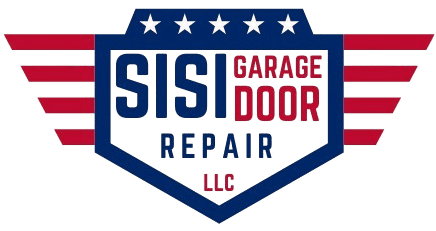
Article:
Emergency Garage Door Maintenance Secrets You Must Know: Essential Tips for Homeowners and Business Owners

A sudden garage door failure can expose properties to security breaches and serious injury within minutes. This guide delivers critical emergency garage door maintenance tips for homeowners and business owners in Florida and Minnesota, outlining common failures, safe interim fixes, when to call 24/7 professionals, preventative routines, regional service nuances, opener troubleshooting, and DIY risk management. By understanding these secrets, readers gain actionable insights to protect assets, maintain safety, and decide when expert intervention from Today’s Garage Door Repair Service is essential.
What Are the Most Common Emergency Garage Door Problems?

Emergency garage door maintenance relies on swift diagnosis of failures that compromise security and functionality. Recognizing these issues early reduces downtime and injury risk, ensuring uninterrupted access and peace of mind.
An overview of the top five scenarios that demand immediate attention:
| Entity | Attribute | Value |
|---|---|---|
| Garage Door Spring | Failure Mode | Torsion or extension spring breakage under high tension |
| Garage Door Opener | Malfunction Trigger | Power outage, motor overload, circuit failure |
| Garage Door Track | Misalignment Cause | Bent rails or damaged rollers causing derailment |
| Garage Door Cable | Damage Indicator | Snapped or frayed corrosion under load |
| Safety Sensor | Fault Signal | Blinking LED or inconsistent obstruction detection |
Each entry represents a failure that directly halts door operation and jeopardizes safety, highlighting the need for professional intervention via our broken garage door spring repair or related services.
How to Identify Signs of a Broken Garage Door Spring
A broken garage door spring occurs when torsion or extension springs snap under tension, preventing normal door movement and signaling immediate repair. Key symptoms include:
- Loud “bang” noise during operation.
- Door remains stuck halfway or won’t budge.
- Visible gap in the spring coil.
- Uneven door height when partially opened.
Recognizing these indicators confirms spring failure and prompts contacting expert technicians who perform safe replacements.
What Causes Garage Door Openers to Malfunction Suddenly?
Garage door openers malfunction suddenly when electrical or mechanical components fail, interrupting power or control signals and leaving doors inoperable. Common causes are:
- Power outages or tripped breakers.
- Worn motor gears or drive belts.
- Faulty circuit boards and wiring.
- Dead batteries in remotes or wall-mounted transmitters.
Understanding these triggers helps determine if a simple reset suffices or if professional garage door opener troubleshooting & repair is required.
Why Does a Garage Door Get Off-Track and How to Recognize It
A door goes off-track when rollers jump or tracks bend under stress, causing misalignment that prevents smooth travel and risks collapse. Warning signs include:
- Grinding sounds as rollers contact bent rails.
- Visible gaps between rollers and track.
- Door tilt or lean during opening.
Prompt assessment can reveal whether rollers or tracks need adjustment or replacement.
How to Detect Snapped or Frayed Garage Door Cables Quickly
Garage door cables handle high loads, and wear results in fraying or snapping that risks sudden door drop. Indicators include:
- Loose or dangling cable segments.
- Visible rust or wire strands protruding.
- Inconsistent tension when manually lifting.
When cable damage appears, contact our snapped garage door cable replacement technicians immediately.
What Are the Symptoms of Faulty Garage Door Sensors?
Photo-eye sensors stop door movement when obstacles are detected; misalignment or dirt causes malfunction and erratic stops. Look for:
- Blinking red or green LED lights.
- Door reversing unexpectedly mid-cycle.
- Obstruction warning despite clear path.
Cleaning and realignment by our garage door sensor repair & alignment team restore safe operation.
How Can You Safely Handle Emergency Garage Door Issues?
Safe emergency handling prevents injury and further damage by controlling energy sources and stabilizing the door assembly before attempting any fixes. An immediate, measured approach protects both people and equipment.
What Immediate Safety Actions Should You Take When a Spring Breaks?

When a garage door spring breaks under tension, the risk of rapid, uncontrolled movement is high. Homeowners must:
- Disconnect power to the opener.
- Secure the door in the fully closed position.
- Clear the area of bystanders.
- Avoid manual lifting without professional help.
Additional Detail for Safety Actions
A step-by-step safety protocol ensures no critical step is skipped:
- Turn off the circuit breaker feeding the opener to prevent accidental activation.
- Engage the manual release cord only once the door is locked closed.
- Block the bottom of the door with clamps or wood blocks to prevent sudden descent.
- Wear safety goggles and gloves before approaching any component.
- Keep a minimum 6-foot clearance from the door path.
Executing these precautions eliminates uncontrolled spring recoil and readies the door for professional replacement.
How to Use the Garage Door Emergency Release Cord Correctly
The release cord disengages the opener’s trolley, allowing manual door movement. To use it safely:
- Pull the red cord straight down.
- Lift the door manually to the fully closed or open position.
- Re-engage by running the opener cycle or pulling the cord toward the door.
Correct use prevents gear damage and ensures temporary access when power fails.
When Is It Safe to Attempt DIY Troubleshooting on Your Garage Door?
Basic troubleshooting—like checking power supplies, tightening loose bolts, or clearing debris—is safe when the door remains balanced and springs intact. Do not attempt spring realignment or cable repairs without specialized tools and training.
Why Is Professional Repair Essential for High-Tension Components?
High-tension parts such as springs and cables store immense mechanical energy that can cause serious injury if handled improperly. Professional technicians use calibrated tools, follow industry safety protocols, and carry liability coverage to guarantee a secure resolution.
When Should You Call for Emergency Garage Door Repair Services?
Knowing when to call experts ensures you avoid injuries and minimize security risks by restoring door function promptly through professional channels like Today’s Garage Door Repair Service.
What Garage Door Problems Require 24/7 Emergency Response?
Situations demanding immediate service include:
- Broken springs or cables.
- Off-track doors that could collapse.
- Complete opener failures leaving the door stuck open.
- Malfunctioning safety sensors compromising user protection.
How Does Same-Day Service Minimize Security and Safety Risks?
Same-day repair replaces faulty components and resets systems within hours, reducing exposure to theft, weather damage, and accidents. Rapid response preserves structural integrity and occupant safety in both residential and commercial settings.
What Are the Benefits of Hiring Expert Technicians for Emergency Repairs?
Professional technicians deliver:
- Certified spring and cable handling.
- Precise opener diagnostics.
- Compliance with safety standards.
- Warranties on parts and labor.
What Are the Best Emergency Garage Door Maintenance Tips to Prevent Breakdowns?
Preventative Maintenance Benefits
Regular maintenance, including lubrication and inspections, extends the lifespan of garage doors and reduces the likelihood of emergency repairs. Addressing minor issues early on can prevent costly breakdowns and ensure smooth operation.
Garage Door Manufacturers Association, Best Practices Guide (2023)
This citation reinforces the article’s recommendations for preventative maintenance and its benefits.
| Entity | Feature | Benefit |
|---|---|---|
| Lubrication | Roller and hinge oil | Reduces friction and wear |
| Inspection | Spring and cable checks | Detects early fatigue or rust |
| Track Cleaning | Debris removal | Prevents misalignment |
| Tightening Hardware | Bolt and bracket torque | Maintains structural integrity |
| Professional Tune-Up | Balance and alignment | Ensures smooth, safe operation |
Structured maintenance like this complements our Preventative Garage Door Maintenance Checklist service for comprehensive coverage.
How Does Regular Lubrication Extend Garage Door Lifespan?
Lubrication coats moving parts, reducing heat and abrasion that degrade springs and rollers, which in turn lowers failure rates and emergency call-outs.
Why Are Routine Inspections Critical for Early Problem Detection?
Inspections reveal corrosion, misalignment, and component fatigue before they escalate, enabling timely repairs that avert costly breakdowns.
What Are Key Preventative Maintenance Checklist Items for Homeowners?
Homeowners should:
- Lubricate rollers, hinges, and springs every six months.
- Tighten loose hardware quarterly.
- Test auto-reverse functionality monthly.
- Clean sensor lenses and tracks bi-monthly.
Additional Detail for Preventative Maintenance Checklist
Inspect springs for gaps or rust, examine cables for frays, and ensure tracks remain free of debris and dents. Vigilant monitoring extends component life and reduces unplanned repairs.
How Can Professional Tune-Ups Help Avoid Emergency Repairs?
Technicians calibrate spring tension, align tracks, and adjust opener force settings, delivering a balanced system that resists unexpected failures.
How Do Emergency Garage Door Services Differentiate in Florida and Minnesota?
Regional climate and service infrastructure shape emergency repair protocols, with Today’s Garage Door Repair Service customizing solutions for each state’s unique demands.
What Emergency Garage Door Repairs Are Most Common in Florida?
Florida’s high humidity and salt air accelerate spring corrosion and sensor failures. Coastal areas see more rusted cables and photo-eye obstructions requiring urgent intervention.
How Does 24/7 Emergency Service Operate in Minnesota Cities?
In Minnesota’s freeze-thaw cycles, ice buildup and frozen rollers cause door jamming. Our Minneapolis and St. Paul teams maintain rapid dispatch protocols to clear ice, replace cold-stressed springs, and restore operation.
Which Local Factors Affect Garage Door Emergencies in These States?
Temperature extremes, coastal humidity, and seasonal debris like leaves or ice influence wear rates and failure types, guiding our preventative maintenance plans.
Additional Detail for Location-Specific Services
Home and business owners can request immediate assistance through our Florida hotline at (321) 555-FLOR or Minnesota line at (612) 555-MNDR, both staffed 24/7 to dispatch certified technicians.
How Can You Troubleshoot and Temporarily Fix Garage Door Opener Problems?
Temporary fixes restore access while waiting for professional repairs, combining safe resets and manual overrides to maintain security.
What Are Quick Fixes for a Garage Door That Won’t Open Suddenly?
First, check circuit breakers and reset any tripped switches. Replace remote batteries and verify wall switch wiring. Clear sensor paths and test manual release.
How to Reset or Reprogram Garage Door Remotes Safely
Follow the manufacturer’s button sequence: press “Learn,” then press the remote button until the opener’s indicator light blinks. This resets codes and prevents remote interference.
Why Do Garage Door Sensors Blink Red and How to Fix Them?
A blinking red beam indicates misalignment or dirty lenses. Clean both sensor eyes, adjust their brackets until LEDs turn solid, and ensure the safety beam is unobstructed.
What Are the Risks of DIY Emergency Garage Door Repairs?
While minor troubleshooting is safe, tackling high-tension parts without expertise can lead to severe injury and void manufacturer warranties.
Why Is DIY Spring Repair Dangerous and Often Prohibited?
Garage door springs store lethal energy that can release suddenly, causing crushed fingers or head trauma. Regulations prohibit unlicensed handling of torsion springs.
Garage Door Spring Safety
Garage door springs store significant mechanical energy, and improper handling can lead to severe injuries. It is crucial to disconnect power and secure the door before attempting any repairs. Professional technicians use specialized tools and follow safety protocols to mitigate risks.
National Safety Council, Home Safety Manual (2022)
This citation supports the article’s emphasis on the dangers of DIY spring repair and the importance of professional assistance.
What Tools and Expertise Are Required for Safe Garage Door Repairs?
Proper spring winding bars, cable tension gauges, torque tools, and knowledge of balance testing are essential to comply with industry safety standards.
How Can Improper Repairs Lead to Further Damage or Injury?
Incorrect spring tension leads to door drop, early opener burnout, and compromised safety sensor operation, increasing liability and repair costs.
Homeowners and business owners who integrate these emergency garage door maintenance tips can safeguard their properties and reduce unexpected downtime. When high-tension components fail or complex opener issues arise, relying on Today’s Garage Door Repair Service guarantees certified expertise, 24/7 availability, and same-day response across Florida and Minnesota. Prioritize preventative care through our detailed maintenance checklist to minimize emergency calls and extend your door’s lifespan. Visit our hub on emergency garage door services or schedule professional assistance today to secure continuous, worry-free operation.
